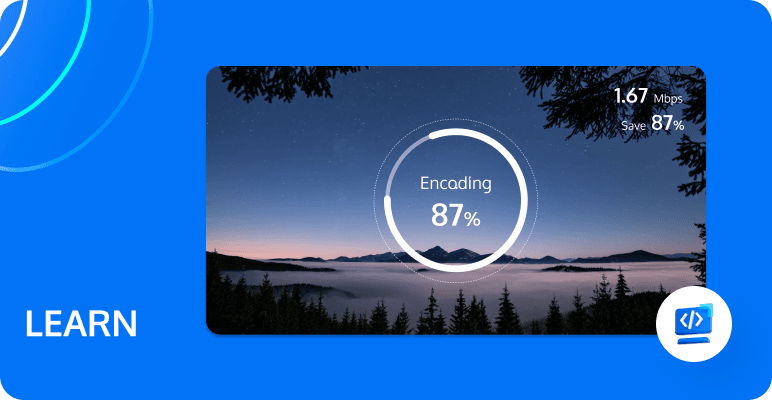How to choose the best video container format?

When it comes to video formats, understanding the differences between various container formats is crucial for ensuring optimal playback, compatibility, file size, and specific features. In this article, we'll explore the most popular video container formats to help you make an informed decision when choosing the right one for your needs.
What is a Video Container Format?
Before diving into how to choose the best format, it's essential to understand what a video container format is. Essentially, a video container is a file format that encapsulates various types of data such as video, audio, subtitles, and metadata (like title, description, and author) into a single file. The container format does not affect the video quality but plays a vital role in determining the file's compatibility, compression, and playback options. Popular video container formats include MP4, MOV, MKV, and AVI.
Difference between MP4, MOV, MKV, and AVI
1. MP4 (MPEG-4 Part 14)
MP4, or MPEG-4 Part 14, is a widely-used multimedia container format that can store both video and audio data. It is compatible with most devices and media players, making it a popular choice for sharing and distributing video content. MP4 files are typically smaller in size than other formats, making them easier to upload and download.
Advantages:
- Wide compatibility: MP4 is supported by most modern devices and media players.
- Efficient compression: MP4 files can be compressed using H.264 or H.265 codecs, reducing file size without compromising quality.
- Supports digital rights management (DRM): MP4 supports encryption, making it suitable for copyrighted content.
2. MOV (QuickTime File Format)
MOV, or QuickTime Movie, is a file format developed by Apple for storing video and audio data. It is commonly used for recording and editing video on Mac computers. MOV files are known for their high-quality video and audio, making them a popular choice for professional video editing and production.
Advantages:
- Versatile: MOV is compatible with both Windows and macOS systems.
- High-quality video: MOV supports various high-quality video codecs, including ProRes and DNxHD.
- Editing-friendly: MOV is widely used in professional video editing software.
3. MKV (Matroska Video)
MKV, or Matroska Video, is an open-source multimedia container format that can store multiple audio, video, and subtitle tracks in a single file. This makes it a popular choice for high-quality video content, such as Blu-ray rips and high-definition video files. MKV files also support advanced features such as chapter markers and metadata.
Advantages:
- Open-source: MKV is an open-source format, free from patents and licensing issues.
- Highly customizable: MKV allows users to store multiple audio, video, and subtitle tracks within a single file.
- High-quality streaming: MKV supports high-quality video codecs like H.264, H.265, and VP9.
4. AVI (Audio Video Interleave)
AVI, or Audio Video Interleave, is a file format developed by Microsoft for storing video and audio data. It is compatible with most media players, but is less common than other formats. AVI files are known for their high-quality video and audio, but can be larger in size than other formats.
Advantages:
- Legacy support: AVI has been around since the early days of video playback, making it compatible with many older systems.
- No digital rights management: AVI does not support DRM, making it suitable for non-copyrighted content.
- Customizable: AVI allows users to customize the video and audio settings.
Key Factors to Consider
When selecting the best video container format for your project, several key factors come into play:
1. Compatibility: Ensure the format is compatible with the platforms where the video will be uploaded or the devices it will be viewed on. MP4, for instance, is widely supported across different devices and platforms.
2. Quality: Some formats support higher video and audio quality. For example, MKV can hold high-quality video and multiple audio tracks and subtitles but might not be compatible with all devices.
3. Compression: Consider the format's support for compression to reduce file size without significantly impacting quality. MP4 is known for balancing quality and file size efficiently, making it a preferred choice for online streaming.
4. Features: Evaluate the specific features you need, such as support for subtitles, multiple audio tracks, and metadata. MKV excels in this area, offering comprehensive support for various audio and subtitle formats.
Making Your Choice
To choose the best video container format, consider the end-use of your video. If you're aiming for wide compatibility and efficient streaming, MP4 is often the safest bet. For projects involving extensive editing or requiring high-quality results with no concern for file size, MOV or AVI might be more suitable. MKV stands out for its support for multiple audio and subtitle tracks, making it ideal for films or shows meant for multilingual audiences.
In conclusion, there's no one-size-fits-all answer to the best video container format. Assess the compatibility, quality, file size, and specific features you need for your project. Understanding the strengths and limitations of each format will guide your decision, ensuring your video reaches its intended audience in the best possible form.
Tencent MPS
Tencent MPS encoding supports a variety of container formats, with input formats including: 3GP, AVI, FLV, MP4, M3U8, MPG, ASF, WMV, MKV, MOV, TS, WebM, and MXF. Output container formats comprise: Video - FLV, MP4, HLS, MXF; Audio - MP3, MP4, Ogg, FLAC, M4A; and Image - GIF, WebP.
Below are several common scenarios for your reference:
1. Video Websites: MPS covers all mainstream video formats and supports multiple resolutions and bitrates, enabling video websites to deliver a smooth and consistent user experience to users with different bandwidth options.
2. Online Education: MPS' powerful video transcoding feature can generate video files of different specifications, so video can be played back on various devices, making it highly suitable for the online education industry.
3. Broadcasting Industry: MPS features fast and stable multipart transcoding and supports concurrent task execution and dynamic scaling, satisfying the needs for efficient transcoding in the broadcasting industry.
4. OTT Smart TVs: MPS supports video transcoding to 2K and 4K resolutions for smart TVs, so as to provide enhanced video quality for viewers.
Choosing the right video container format is crucial for ensuring optimal video quality, compatibility, and compression efficiency. Feel free to Contact Us for more information.
